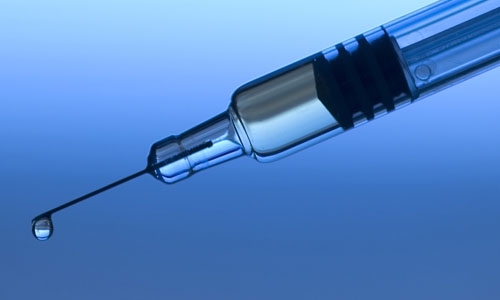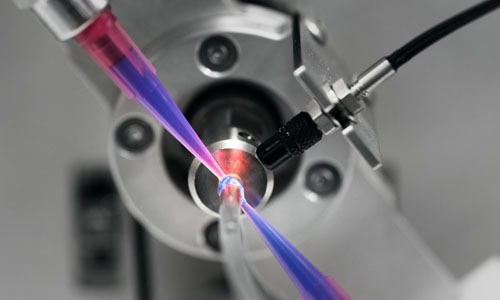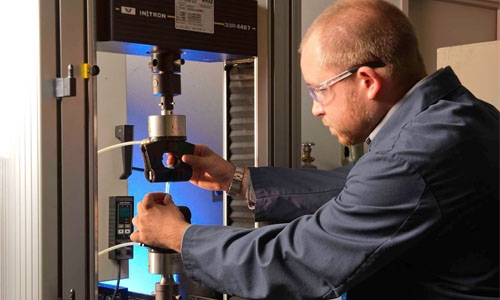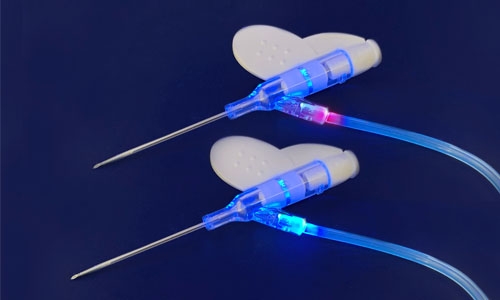Understanding Key Factors for Performance, Safety, and Efficiency
In the world of medical device assembly, the stakes are incredibly high. Medical professionals rely on the performance, safety, and reliability of devices that are often life-saving. Achieving the right adhesive bond is not only crucial for the product's functionality but also for ensuring patient safety. Selecting the best adhesive from a wide variety of available options can seem daunting, but by focusing on specific criteria, engineers and manufacturers can make an informed, optimal choice.
The Chemistry Behind Medical Adhesive Selection
When assembling medical devices using materials like engineered plastics (polycarbonate, acrylic, ABS, nylon) with metals or glass, the adhesive chemistry becomes a pivotal decision point. There are several adhesive types available for different combinations of materials: from light-curable acrylated urethanes to cyanoacrylates, 1- or 2-part epoxies, and even hybrid systems that combine thermal and light curing capabilities.
For medical device manufacturers, one of the most critical considerations is biocompatibility, as these devices often come into direct contact with the human body. Common adhesives used in this field, such as light-curable acrylated urethanes, offer the benefit of curing quickly when exposed to light, making them ideal for transparent plastics. Cyanoacrylates, flexible urethanes, and rigid epoxies are also widely used based on the specific bonding and material compatibility requirements.
Viscosity: Finding the Right Flow Characteristics
Viscosity, or the measure of a fluid’s resistance to flow, is another essential parameter in selecting the appropriate adhesive for medical device assembly. The chosen adhesive must meet the demands of the assembly process, whether that involves potting, filling grooves, or applying precise beads.
Adhesive dispensed onto tubes with the RotoSpense 360 Workstation
For engineers working in medical device manufacturing, the ability to control the viscosity is key. If the assembly process involves filling gaps or potting, a lower viscosity fluid is preferable. However, for applications requiring beads or dots of adhesive, a higher-viscosity or thixotropic material may be more suitable. Thixotropic materials flow easily under shear (like during application) but thicken once the shear is removed. This behavior is particularly useful when precise adhesive placement is critical, as it prevents unwanted spreading.
Understanding these nuances can help ensure that the adhesive chosen will meet both the performance and manufacturability requirements of the device.
Adhesion: Optimizing Bond Strength and Durability
Selecting the best adhesive also involves considering the specific adhesion characteristics needed for the device’s performance. Medical devices are often subjected to stringent mechanical tests, such as lap shear or peel force testing, to ensure bond integrity under expected loads.
An application engineer uses an instron for mechanical testing.
The performance of an adhesive in such tests often depends on the materials used, surface preparation, and curing conditions. In some cases, components must undergo accelerated aging to simulate long-term use, particularly in harsh environments like high temperatures or humidity. However, pushing the limits of these aging tests can sometimes backfire, especially with adhesives. Over-exposure to extreme conditions can alter the adhesive’s properties, reducing its flexibility or elongation, which could lead to premature failure in the field.
Therefore, it’s essential to select an adhesive with proven performance in similar applications and conditions to ensure reliability and longevity.
Ease of Processing: A Key to Manufacturing Efficiency
For medical device manufacturers, efficiency is as important as performance. Adhesives can greatly impact production speed and cost, especially when choosing between 1-part and 2-part systems. 1-part adhesives, such as acrylated urethanes, are often favored for their simplicity. They do not require complex metering systems, have fewer processing steps, and eliminate the need for system purging, making them ideal for high-volume production.
Moreover, the curing process plays a vital role. Light-curable adhesives can dramatically speed up production times by allowing on-demand curing. However, it’s important to evaluate how easily the adhesive can be integrated into existing production lines, whether the assembly is manual, semi-automated, or fully automated.
Manufacturers must also consider potential disruptions during production, such as line stoppages or variability in adhesive properties, which could affect performance. Ensuring that the adhesive can handle these challenges is critical for avoiding downtime and minimizing scrap rates.
Biocompatibility and Regulatory Considerations
In medical device applications, biocompatibility is non-negotiable. Adhesives used in these assemblies must meet strict standards such as ISO 10993 or USP Class VI to ensure that they are safe for use in medical environments.
These tests are typically conducted on fully cured adhesive samples, but manufacturers must also conduct their own testing to confirm that the adhesive, as used in the final product, remains compliant. Factors like curing time and method can affect the adhesive’s biocompatibility, so close attention to the complete assembly process is necessary.
Most adhesives used in medical devices are compatible with common sterilization methods, such as ethylene oxide (EtO) and gamma sterilization. However, resistance to autoclaving is often limited to a few cycles, which may be a consideration depending on the device’s intended use.
Enhancing Quality Through Innovative Solutions
Assuring a high-quality bond is essential for medical device reliability. Some advanced adhesives incorporate fluorescing agents, allowing for easy inspection under UV light. This feature enables manufacturers to ensure that the adhesive covers the entire bond line and reveals any potential defects like air bubbles or voids.
Catheters bonded with fluorescing adhesive for quality inspection.
Innovations, such as See-Cure technology, add an additional layer of quality control. These adhesives change color once fully cured, making it easy to verify that the adhesive has cured completely, even in complex assemblies. This technology assists manufacturers because it helps build a safety factor into the assembly process.
Encompass® is another novel invention combining Dymax's patented See-Cure color-change and Ultra-Red® fluorescing technologies into one. When formulated into Dymax medical device adhesives, the technology enables users to see where a light-curable material has been placed onto a component and ensure it is fully cured after transitioning from bright blue to colorless.
The Ultra-Red fluorescing capability enables the adhesive to remain colorless until exposed to low-intensity UV light, at which point it fluoresces bright red. The vivid color contrasts greatly on plastics and other substrates that naturally fluoresce blue, aiding with visual inspection of the bond line or coated area. Ultra-Red® technology also produces a unique spectral signature that can be used for product authentication.
As a result, manufacturers gain efficiencies from Encompass technology with rapid, on-demand curing with easy cure confirmation and post-cure bond-line inspection.
True Cost vs. Price: Understanding the Value of Adhesives
Cost is an important consideration, but focusing solely on the per-gram price of adhesives can be misleading. The total cost of using an adhesive involves factors like waste reduction, processing efficiency, and maintenance. For example, a more expensive light-curable adhesive may offer significant cost savings by reducing curing times and minimizing downtime.
Evaluating the adhesive in the context of the entire manufacturing process ensures that the chosen material will provide the best value, not just the lowest price.
Conclusion: Partnering with Experts for Best Results
Selecting the right adhesive for medical device assembly requires balancing several factors, including chemistry, viscosity, adhesion, and processing needs. By partnering with an adhesive supplier who understands the unique challenges of medical device manufacturing, engineers can ensure a reliable bond, optimal performance, and long-term device safety.
Lab technicians collaborate on a project.





